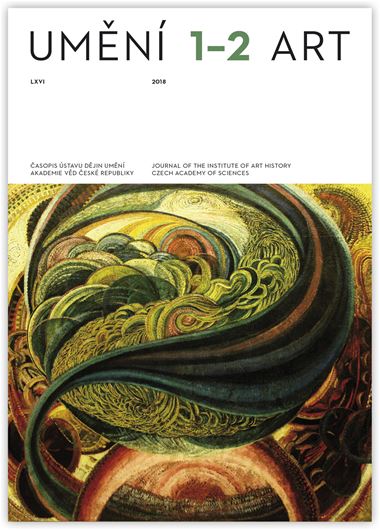Ivo Hlobil
Gravierte Schleier von Madonnen und Vesperbildern — ein
autochthones Motiv des böhmischen Schönen Stils und seine religiöse Funktion
This article first of all deals systematically with the engraving of the Pietas and Madonnas of the Bohemian Beautiful Style, specifically the engravings on Mary’s head covering and Christ’s loincloth. It points out that this apparently merely decorative motif jointly formed the identity of the Bohemian Beautiful Style. The study of this enables us to trace, in greater detail than before, the spread of the Bohemian Beautiful Style to a wide area of Europe. The motifs of the Bohemian Beautiful Style are not original. Clearly the sole exception among the motifs of the Bohemian Beautiful Style is the autochthonic motif of the engraving of the cloths of Mary and Christ, unknown before this, but additionally documented in several variations. This engraving marks almost all the classical stone Madonnas of the Bohemian Beautiful Style. The engraved Madonnas of the Bohemian Beautiful Style executed in wood are of a later date. Relatively the oldest is the recently published torso of a Madonna in the Michigan Ann Arbor Museum (ca. 1395–1400), according to the presence of the engraving work of a carver more probably from Prague than Vienna. Engraving was found on all four of the Parléř Pietas of the so-called Brno group surmised by Albert Kutal. The most significant of these is the monumental Pieta in the Brno church of St Thomas (ca. 1385). There are dozens of stone Pietas from the supreme period of the Bohemian Beautiful Style with primarily verified engraving. The use of engraving techniques on the Bohemian Beautiful Madonnas and Pietas had a topical, later completely forgotten, iconographic, symbolic and religious function. It was linked with the veneration of the veil of the Virgin Mary kept in the treasury of St Vitus’ Cathedral and its ceremonial public display. Research on the engraving of the large number of preserved Beautiful Style statues represents a long-term task, the fulfilment of which to its full extent exceeds the possibilities of any individual and of the profession of art historian. Cooperation is essential with technologists, restorers and professional photographers on an international level.
Full-text in the Digital Library of the Czech Academy of Sciences:
https://kramerius.lib.cas.cz/uuid/uuid:a6141124-fa8f-48bb-88a6-a01e8139794d
< back

